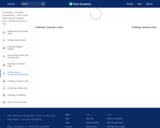
An overview of joining tables to themselves with self-joins
- Subject:
- Applied Science
- Computer Science
- Material Type:
- Interactive
- Lesson
- Provider:
- Khan Academy
- Provider Set:
- Khan Academy
- Author:
- Pamela Fox
- Date Added:
- 07/11/2021


An overview of joining tables to themselves with self-joins

Working through a calculation for K-Ar dating (good to have some prior experience with e and logarithms). Created by Sal Khan.
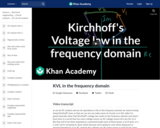
Demonstration that Kirchhoff's voltage law applies in the frequency domain. The voltage phase offsets around a loop sum to zero. Created by Willy McAllister.
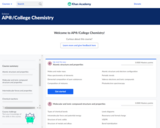
Khan Academy offers practice exercises, instructional videos, and a personalized learning dashboard that empower learners to study at their own pace in and outside of the classroom. We tackle math, science, computing, history, art history, economics, and more, including K-14 and test preparation (SAT, Praxis, LSAT) content. We focus on skill mastery to help learners establish strong foundations, so there's no limit to what they can learn next!
Mastery Lessons:
• Atomic structure and properties
• Molecular and ionic compound structure and properties
• Intermolecular forces and properties
• Chemical reactions
• Kinetics
• Thermodynamics
• Equilibrium
• Acids and bases
• Applications of thermodynamics
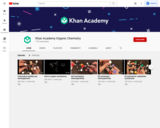
Twelve videos on organic chemistry produced by the Khan Academy.

Brief overview of kidney function and anatomy.
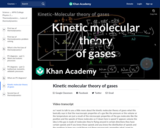
In this video David explains how the internal energy of a gas varies as a function of temperature. Created by David SantoPietro.
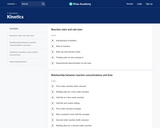
Chemists are often interested in how fast a reaction will occur, and what we can do to control the rate. The study of reaction rates is called kinetics, and we will learn about average reaction rate, rate laws, the Arrhenius equation, reaction mechanisms, catalysts, and spectrophotometry.
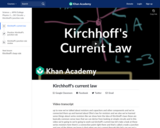
Kirchhoff's Current Law says the currents flowing into a node must add up to zero. Created by Willy McAllister.
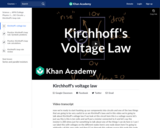
Kirchhoff's Voltage Law says if you travel around any loop in a circuit, the voltages across the elements add up to zero. Created by Willy McAllister.

We begin the derivation of the natural response of the LC circuit, by modeling it with a 2nd-order differential equation. Created by Willy McAllister.

Starting from the differential equation, we come up with a proposed exponential solution and plug it into the equation. This gives us a characteristic equation. A "natural frequency" emerges. Created by Willy McAllister.

We use Euler's Formula to change our complex exponential solution into a solution expressed in terms of sines and cosines. Created by Willy McAllister.

In this final step of the derivation, we find two initial conditions and use them to come up with a sinusoidal solution for the LC natural response. Created by Willy McAllister.

We solve the voltage and current of an example LC circuit with given values for L and C, and an initial charge on the capacitor. Created by Willy McAllister.

The inductor-capacitor (LC) circuit is the place where sinewaves are born. We talk about how this circuit works by tracking the movement of an initial charge we placed on the capacitor. Created by Willy McAllister.

We can predict the shape of voltage and current in an LC circuit by tracking the motion of charge as it flows back and forth. Created by Willy McAllister.
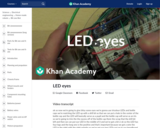
In this video we create and wire Bit-zee's tri-color LED eyes. Created by Karl Wendt.
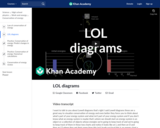
David shows how LOL diagrams allow us to visually represent what we mean by conservation of energy as well as what we mean by an energy system. Created by David SantoPietro.

Labeling voltages on a schematic is not a matter of "right" and "wrong". It simply establishes how the voltage appears in the analysis equations. Created by Willy McAllister.